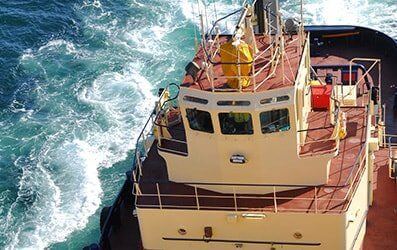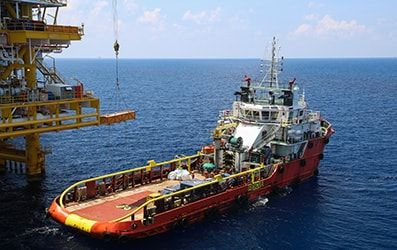If you work offshore or in an inland maritime occupation, it is important to know if you qualify as a “seaman” under the Jones Act. The Jones Act entitles seamen to financial compensation when they get injured at work, and many offshore and maritime jobs are among the most dangerous jobs in the United States.
So, are you a Jones Act seaman?
While this might seem like a straightforward question, it isn’t. The Jones Act’s definition of a seaman is complex, and different courts have interpreted the law in different ways. With that said, most individuals who work onboard vessels and floating oil rigs and platforms qualify as seamen; and, if you get injured at work, you should not let your employer tell you that you don’t qualify for “seaman” status.
Being a “Seaman” Under the Jones Act: The Basics
There are three basic requirements to qualify as a seaman under the Jones Act. An offshore or maritime worker must meet all three requirements in order to qualify. These requirements are:
- Working onboard a “vessel in navigation”
- Contributing to the work of the vessel
- Spending a “significant” amount of time on a vessel or fleet
Let’s look at each of these three requirements in detail:
1. Working Onboard a “Vessel in Navigation”
The first requirement for qualifying as a seaman is working onboard a “vessel in navigation.” The term “vessel” includes all types of boats and ships, as well as floating oil rigs and platforms (but not fixed rigs and platforms, which fall under a different federal law). Some examples of vessels under the Jones Act include:
- Barges
- Cargo and container ships
- Crew boats
- Cruise ships
- Fishing, crabbing, and lobster boats
- Floating rigs and platforms
- Passenger and charter vessels
- Patrol and security vessels
- Pilot boats
- Push boats
- Supply boats
- Tugs
To be considered “in navigation,” a vessel must be afloat (i.e. not on hard storage at a port or marina). It must also be (i) in operation, (ii) capable of moving, and (iii) on navigable waters. This does not mean that the vessel actually has to be moving. For example, if a fisherman is injured while unloading a catch at the port, the fisherman would likely be covered under the Jones Act. In this case, the fishing boat is clearly in operation and capable of moving (since the fisherman is unloading a fresh catch), and it is also presumably on navigable waters since it has just recently returned from a deployment or expedition.
Navigable waters include all waters that can be used for conducting interstate or foreign commerce. This includes rivers, lakes, harbors and the open ocean.
2. Contributing to the Work of the Vessel
The second requirement for qualifying as a seaman is performing work that contributes to the accomplishment of the vessel’s mission. Virtually all crew members will meet this requirement, as it is difficult to imagine a scenario in which a crew member’s work does not contribute to accomplishing the vessel’s mission in some way. Captaining a vessel, running a vessel’s engine room, performing cleaning or repairs, and doing the work that the vessel set out to do (i.e. fishing or providing a tow) all generally meet this requirement.
Whose might not be considered contributing to the accomplishment of a vessel’s mission? There are a few possibilities. For example, if an administrative employee is onboard a vessel in transit from one land-based location to another (or traveling to or from a fixed rig or platform), this employee may not qualify. Or, if researchers onboard a vessel has their own mission unrelated to the mission of the vessel itself, these researchers may not qualify as seamen under the Jones Act. However, this is not necessarily the case, and assessing an individual employee’s rights requires a close look at the relevant facts on a case-by-case basis.
3. Spending a “Significant” Amount of Time on a Vessel or Fleet
The third requirement for qualifying as a seaman is spending a “significant” amount of time onboard a specific vessel or onboard a specific fleet of vessels. What qualifies as a significant amount of time is not precisely defined, but it is generally understood to be around 30 percent (or more) of an employee’s weekly work hours.
Many offshore and maritime workers will meet this requirement without question. If you spend your days fishing offshore, running charters, tugging or towing, or onboard a cargo ship or cruise liner at sea, then the odds are that you qualify as a seaman. Similarly, if you are a manager or engineer and you split your time between your company’s vessels, it is very likely that you qualify as a seaman as well.
But, what if you clean boats for a living? What if you are a diver? What if you are an inspector and you split your time between examining vessels and writing reports in your office? In these scenarios, whether you qualify as a Jones Act seaman might not be as clear-cut. Once again, however, you should not assume that you don’t qualify, but instead, ensure that you have a clear understanding of your individual legal rights.
Occupations in Which Workers Generally Qualify as Seamen
Able seaman (AB deckhand) and ordinary seaman (OS deckhand) are common positions on a wide range of different commercial vessels. While these jobs have “seaman” in their title, these are not the only jobs that qualify as “seamen” under the Jones Act.
We’ve touched on several other occupations already. There are lots of different offshore and maritime occupations in which workers can qualify as Jones Act seamen. To recap and expand on what we have discussed already, some examples of occupations in which workers will generally qualify as seamen include:
- Able and ordinary seamen
- Captains, officers, and mates
- Crewmembers
- Deckhands
- Engineers and electricians
- Fishermen
- Oilers
- Roustabouts
- Servers, cooks, and housekeepers
- Shipmasters
- Tankermen
- Wipers
To be clear, working in one of these occupations does not automatically qualify you as a seaman. You must still meet each of the three requirements discussed above. Practically speaking, however, if you work in one of these occupations, then there is a very good chance that you have seaman status under the Jones Act.
Can Land-Based Workers Qualify as Seamen?
Individuals who spend the substantial majority of their work hours on the water aren’t the only ones who are at risk for suffering job-related injuries. Many land-based maritime occupations are very dangerous as well. While land-based workers who spend less than 30 percent of their time onboard vessels in navigation don’t qualify as seamen under the Jones Act in most cases, there are some exceptions.
For example, in 2021 the federal appeals court for Louisiana, Mississippi and Texas established an expanded definition of a Jones Act seaman that covers more land-based workers. Specifically, the court ruled that the following questions are also relevant to determining a maritime worker’s seaman status:
- Does the maritime worker owe allegiance to a vessel, rather than simply to a shoreside employer?
- Is the maritime worker’s job sea-based or does it involve seagoing activity?
- Is the maritime worker’s assignment to a vessel limited to performing discrete tasks after which his or her connection to the vessel ends; or, does the worker’s assignment include traveling between locations on the vessel?
Depending on the answers to these questions, a maritime worker who does not have a “significant” connection to a particular vessel or fleet could potentially qualify for Jones Act seaman status. Again, however, this is currently limited to cases arising in Louisiana, Mississippi and Texas.
What if You Aren’t a Jones Act Seaman?
Let’s say you don’t qualify as a seaman (and as a result aren’t eligible for Jones Act benefits). What are your legal rights?
Jones Act seamen are not the only offshore and maritime workers who can file claims for job-related injuries. This is because the Jones Act is not the only law that protects land-based and offshore maritime employees.
If you work primarily (or exclusively) onshore and do not qualify as a seaman, you may be entitled to benefits under the Longshore and Harbor Workers Compensation Act (LHWCA) after getting injured on the job. If you work on a fixed rig or offshore platform, the Outer Continental Shelf Lands Act (OCSLA) may apply. Both of these laws provide injured employees with access to benefits similar to those available to non-maritime workers under state workers’ compensation statutes.
RECAP: What Do You Need to Know About Being a Jones Act Seaman?
Let’s recap: If you work offshore or in the maritime industry, what do you need to know about being a Jones Act seaman? First and foremost, knowing if you qualify is extremely important. The Jones Act gives injured seamen clear legal rights—and these rights are not available to other types of workers.
Second, determining whether you qualify as a seaman isn’t always straightforward. While workers in many sea-based occupations almost certainly qualify, understanding whether workers who split their time between land and sea qualify presents more challenges. Finally, even if you aren’t a Jones Act seaman, other federal maritime laws may protect you when you get injured on the job.
Share This







